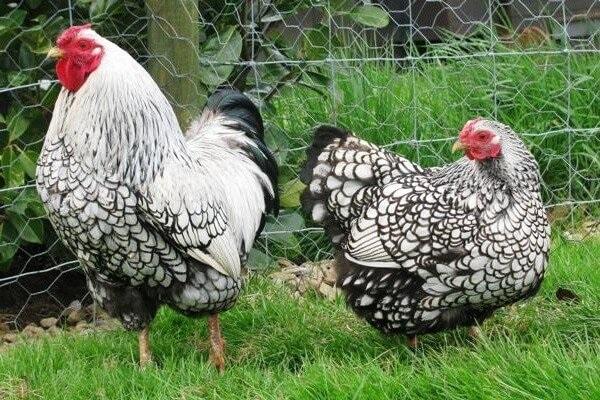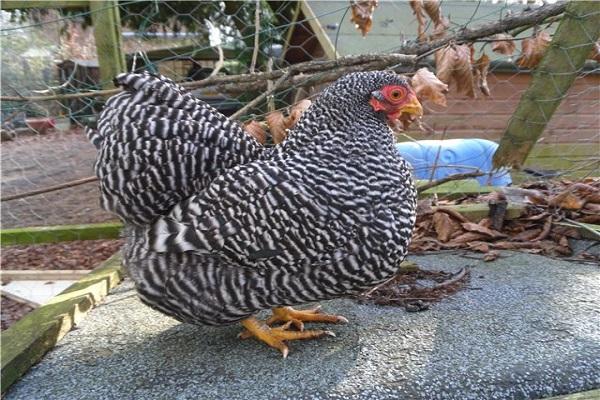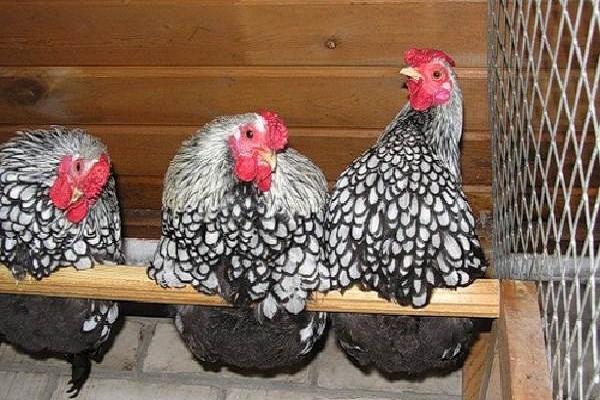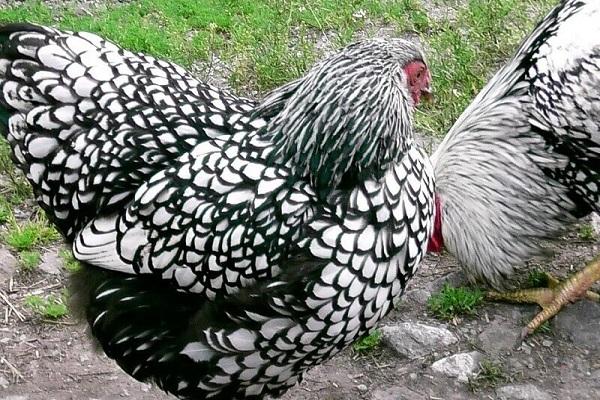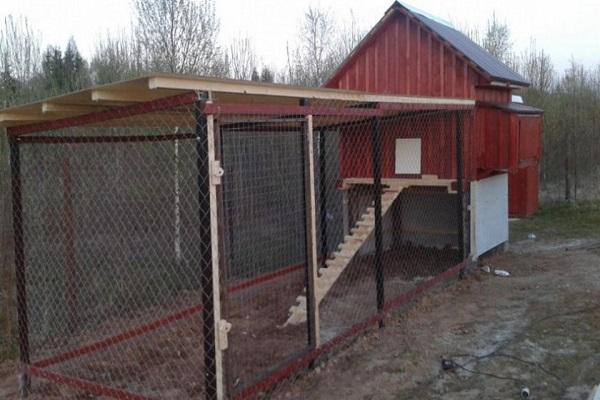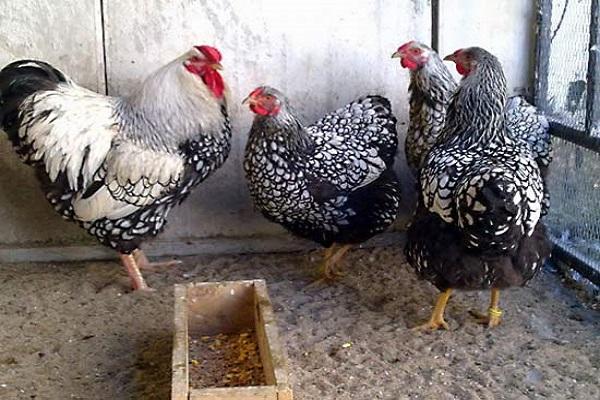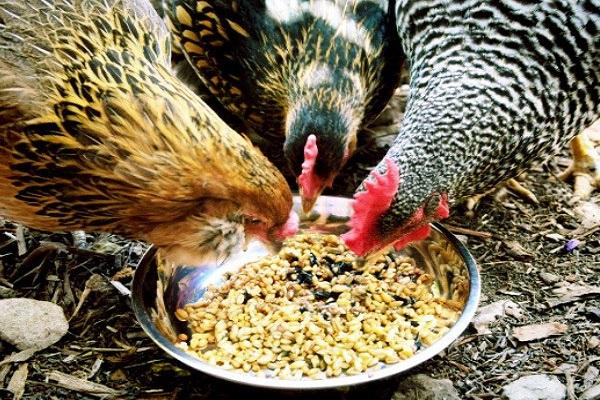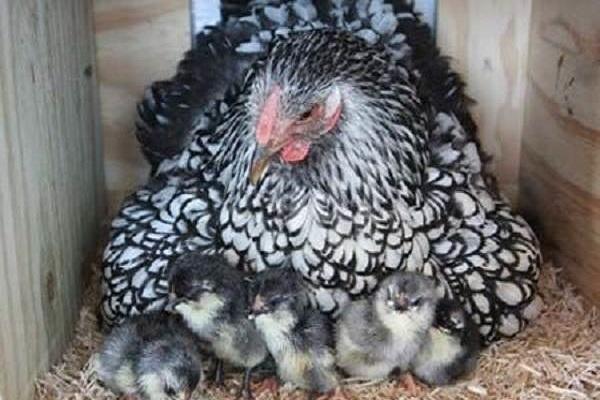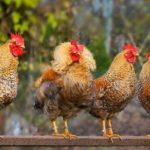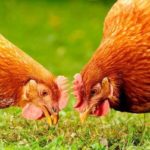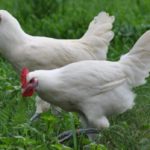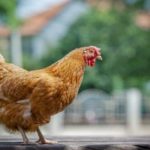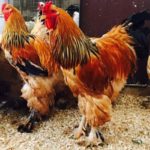Birds of mixed productivity have become very popular among poultry farmers. Wyandotte is an unpretentious breed of chickens, which is characterized by good egg production and excellent meat. Thanks to their phlegmatic character, they get along easily with other domestic birds. Crosses are quietly kept in open cages, as they are lazy and cannot fly. Because of its beauty and richness of colors, the breed is gradually moving into the decorative category.
- Origin story
- Description and characteristics of the Wyandotte breed
- Appearance of chickens
- Character and temperament
- Sexual maturity and egg production
- Advantages and disadvantages
- Care and maintenance of the breed
- Chicken coop and exercise yard
- Feeders and drinkers
- Diet of chickens and adult chickens
- Breeding
- Common diseases and their prevention
Origin story
The breed was discovered in the second half of the 19th century in the United States. Breeders adopted the first variety of silver color as the standard. The result was obtained by crossing representatives of several gene breeds.
The bird received its name from the name of the Indian people, since the color of the plumage coincides with the ritual colors of the settlement.
Description and characteristics of the Wyandotte breed
The good productivity of poultry is combined with its decorative properties. Its value on the farm is due to its good adaptability to harsh winters.
Appearance of chickens
The bird is small and compact. She has a small head with a convex yellow beak. The rooster differs from the female in its large size and highly raised tail. The pink, graceful comb fits snugly along the length of the head. The bird's eyes are large and reddish-orange. Red earlobes have a smooth oblong shape without wrinkles or folds. The head sits majestically on a strong neck, and the neck collar is so full that it covers the shoulders.
The bird's body length is greater than its height, so the back appears quite wide and rounded. The birds' chest is well developed. Lush and abundant plumage covers the entire body and has an openwork frame along the edge. The presence of patterned feathers distinguishes them from other representatives of the breeds. The bird is characterized by long legs and widely spaced yellow toes.
Domestic birds come in a variety of colors:
- black;
- white;
- golden;
- blue;
- striped;
- fawn;
- red;
- mixed.
The most common color is silver.
There are dwarf representatives of birds. They differ only in weight - up to 1 kilogram, and the weight of the egg is approximately 50 grams.
Character and temperament
Chicken breeders note that crosses have a calm, peaceful disposition and get along with other pets. The bird has good health and an obedient character.
Sexual maturity and egg production
Crosses belong to the egg-meat breed. They are quite early ripening, so it is profitable for farmers to keep them on the farm. Chickens quickly gain weight. Hens grow up to 3.0 kilograms, and roosters grow up to 4.0 kilograms.
Wyandotte hens begin laying eggs at 5 months. Egg production in the first year reaches 200 eggs. Over time, productivity decreases to 170 eggs. The eggs are brown in color, quite large in size and reach almost 65 grams.
In dwarf crosses, the indicators are 2 times less. The eggs are correspondingly small - they weigh only 30 grams.
Advantages and disadvantages
The Wyandotte breed has positive and negative sides. The main advantages of poultry include:
- easily adapt to different weather conditions;
- chickens grow quickly;
- egg production does not stop in winter;
- friendliness to other birds of different breeds;
- you can breed the breed at home;
- vitality of chickens;
- early egg production;
- the appearance allows you to decorate any yard;
- do not require difficult conditions for maintenance;
- tolerate frost well;
- representatives are quiet, do not make noise.
In addition to the advantages, farmers also note the disadvantages of birds:
- inactivity leads to obesity;
- sensitivity to infectious diseases transmitted from other birds;
- to obtain the desired color, extra efforts are made;
- rarity of the breed.
Due to the fact that it is difficult to purchase a pure breed, the bird has a high price.
Care and maintenance of the breed
To ensure productive egg production and tasty meat, crosses should be properly maintained. To do this, you should follow some rules.
Chicken coop and exercise yard
In birds, eggs are large and heavy, so it is recommended to place perches on the lower shelves or on the floor.
Despite its friendly attitude towards other birds, this breed should be kept separately to protect it from infections. If this is not feasible, then you need to carefully monitor the health of each bird.
Important: the walking area can be blocked off with a net so that the crosses do not mix.
In winter, the bird is indoors most of the day. Therefore, for better health and productivity, she will have to provide sufficient territory and provide long daylight hours with the help of lamps.
The floor in the chicken coop is covered with sawdust, sunflower husks, and chopped wood. The flooring layer must be at least 7 centimeters. You can add sand, as birds love to swim in it.
Feeders and drinkers
Feeders and drinking bowls are placed on the territory of the cross-country pen. Since these birds have a short beak, the dishes must be specially adapted to their physical characteristics.
Diet of chickens and adult chickens
A balanced and nutritious diet is important for representatives of the breed. Chickens should be fed semolina, various cereals, and chopped boiled eggs. Feeding is carried out at least 7 times a day.
A month later, when they grow up, it is added:
- greenery;
- green onions;
- cottage cheese;
- meat or fish processing.
An adult bird needs food rich in proteins, minerals and vitamins. It is important to add calcium to the diet, which is found in ground shells or in ready-made vitamin compounds.
It is necessary to ensure that the birds do not overeat.If they become obese from uncontrolled absorption of high-calorie food, then the need for active physical movements of the birds will have to be increased. You can place the feeder in the enclosure on a platform that you have to jump onto.
Breeding
Due to their adaptability to harsh winter weather, representatives of the breed are most suitable for chicken breeders raising domestic birds in the northern regions.
Chicks are hatched in incubators and naturally. Crosses are good hens, they cope not only with incubating eggs, but also train and care for their offspring. Chickens have a high survival rate. The chicks quickly grow and fledge. To do this, they should be provided with a balanced diet.
Common diseases and their prevention
Representatives of the breed rarely get sick. Health problems are often associated with injuries. However, prevention against parasites and worms should be carried out regularly. Simple vaccination helps with this.
You can keep your domestic crosses healthy by keeping the walking yard and chicken coop clean. Enclosures should be cleaned and disinfected regularly and each bird should be inspected..
The Wyandotte breed is often found on homestead farms. Due to the endurance of adult birds and the survival rate of cross-breed chickens, they can be bred at home. Birds are resilient and practically not susceptible to disease. The variety of colors, peaceful nature and good health are the main advantages of the breed.

